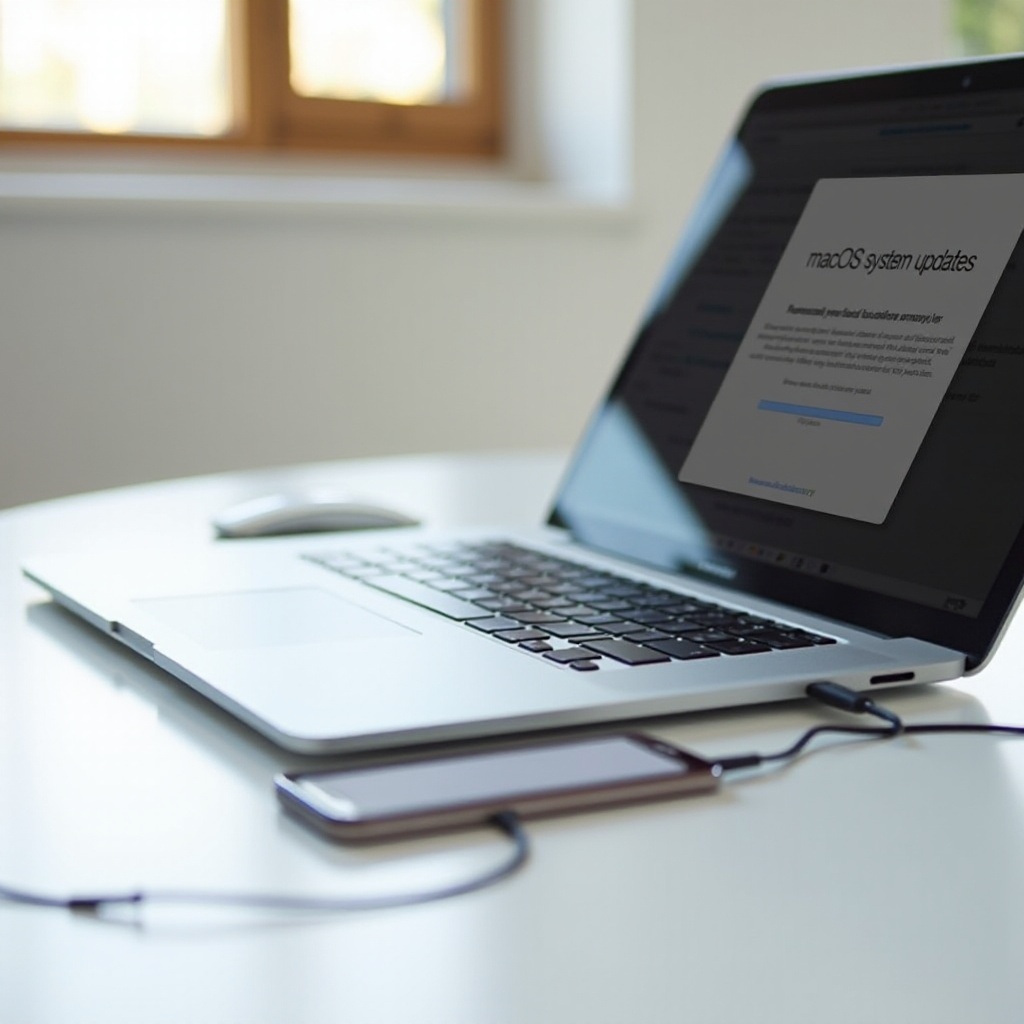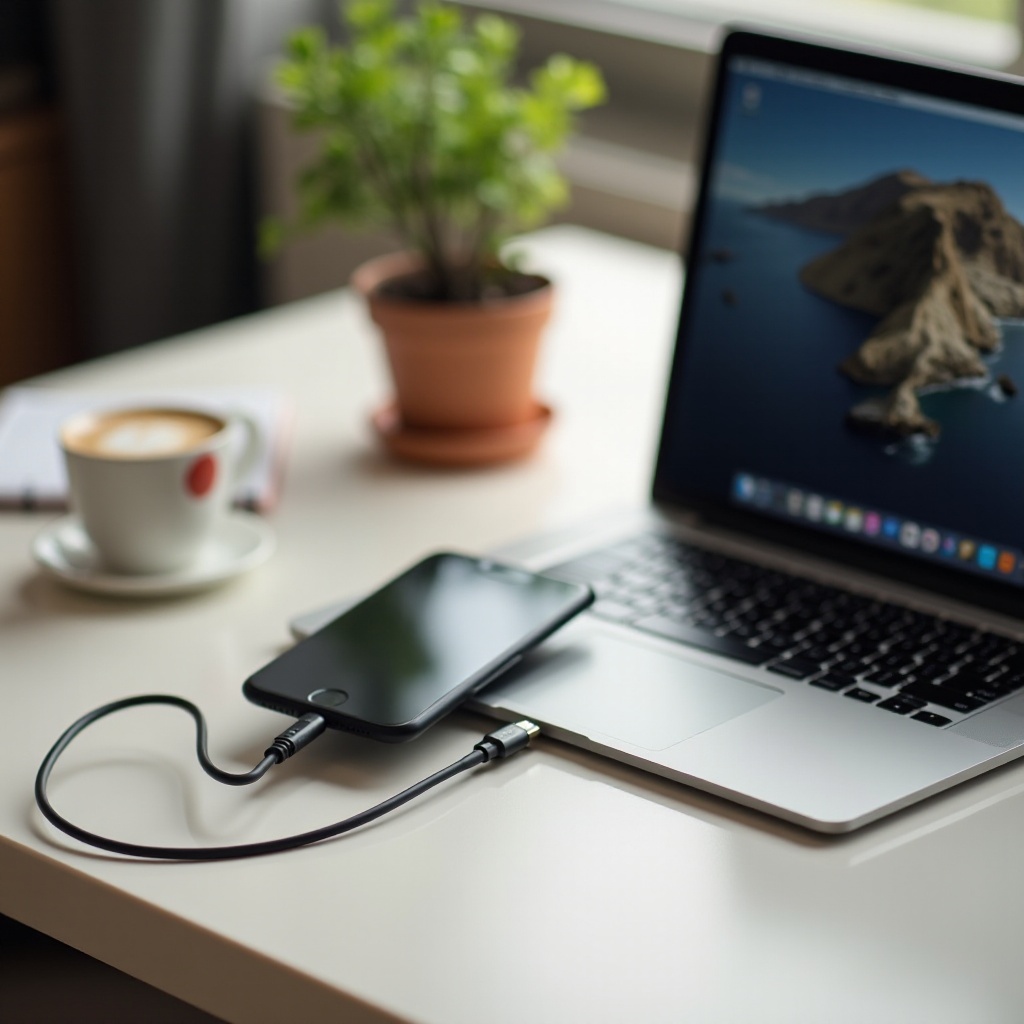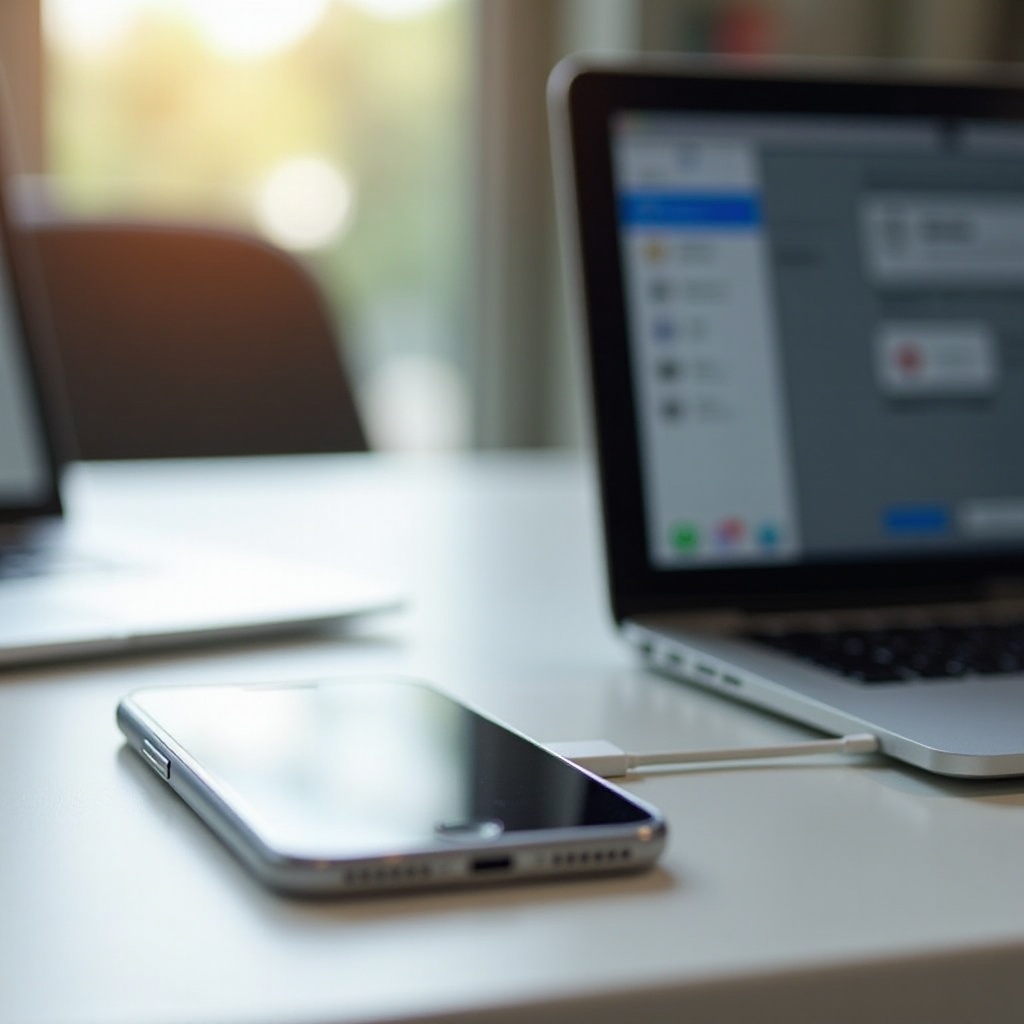Introduction
Updating your macOS can provide exciting new features, improved security, and a smoother user experience. However, these updates can sometimes result in complications, particularly when syncing your iPhone with your Mac. It’s a common issue for users to find their iPhone no longer appears on their Mac after a macOS update. This guide will help you seamlessly reconnect your iPhone with your Mac. We will cover checking compatibility, updating both devices, connecting your phone, authorizing and trusting devices, managing and syncing data, and troubleshooting common issues.

Check Compatibility Between macOS and iOS
Before diving into solutions, it’s essential to ensure that your macOS and iOS are compatible. Each new macOS update usually requires a specific iOS version for compatibility.
-
Identify Your macOS Version: Click on the Apple logo at the top-left corner of your screen. Select ‘About This Mac’ and note the macOS version you are running.
-
Check Your iOS Version: On your iPhone, go to Settings > General > About. Note the iOS version listed here.
Apple typically lists compatibility details on their official website, so it’s worth checking there to confirm if your devices are compatible. Updating both systems ensures they are in sync, and any updates that have been installed on macOS also require corresponding iOS updates. Keeping both systems updated is crucial to avoid connection issues.
If the macOS and iOS versions don’t align properly, one or both devices might not work seamlessly together, saving you time in the following troubleshooting steps.
Update macOS and iOS
Ensuring both your Mac and iPhone run the latest versions of macOS and iOS is critical.
To Update macOS:
- Open System Preferences: Click on the Apple logo at the top-left corner and select ‘System Preferences.
- Software Update: Select ‘Software Update’ and follow the prompts to install any available updates.
To Update iOS:
- Open Settings: On your iPhone, go to ‘Settings.
- General and Software Update: Select ‘General,’ then ‘Software Update,’ and follow the steps to update your device.
Regularly updating your software ensures you benefit from the latest security patches, features, and bug fixes. These updates often solve connectivity issues experienced after macOS updates.
Connecting Your Phone to Your Mac
Once both devices are updated, connect your iPhone to your Mac.
- Using USB/USB-C Cable: Connect your iPhone to your Mac using the appropriate cable.
- Using Wi-Fi Sync: If you prefer a wireless connection, ensure both devices are on the same Wi-Fi network. On your iPhone, go to Settings > General > iTunes Wi-Fi Sync and select your Mac.
Upon connection, your iPhone should receive a ‘Trust This Computer?’ prompt, which you must accept to continue. Accepting it establishes the foundational trust required for data synchronization.
Once everything is updated and the connection is established, your iPhone should appear in Finder (macOS Catalina and later) or iTunes (macOS Mojave and earlier). Verify its presence before proceeding to the next steps.
Authorizing and Trusting Devices
Establishing trust and authorization between your devices is crucial.
- Trust This Computer: When you connect your iPhone, a message should appear asking if you ‘Trust This Computer.’ Tap ‘Trust’ on your iPhone and enter your passcode if prompted.
- Authorize Your Mac in Finder/iTunes: On your Mac, if prompted, select ‘Authorize’ and enter your Apple ID and password.
By authorizing, you permit your Mac to access the data on your iPhone. This step is crucial in avoiding syncing interruptions and errors. Trust must be re-established if permissions or device relationships change, such as after an update.
Managing and Syncing Your Data
After establishing a connection, you can manage and sync your data between your iPhone and Mac.
- Open Finder (macOS Catalina+): In the Finder Sidebar, locate your iPhone under ‘Locations.
- Select Content to Sync: You’ll find several tabs (Music, Movies, Photos, etc.). Check the boxes next to the items you wish to sync.
- Click Apply/Sync: Once you’ve selected the data to be synced, click ‘Apply’ or ‘Sync’ to start the process.
For macOS Mojave and earlier users:
- Open iTunes: Click on the iPhone icon near the top left.
- Select Summary: Choose the content you wish to sync via the sidebar.
- Sync: Click on the ‘Sync’ button at the bottom right.
Consistent syncing ensures your content is always up-to-date, reflecting changes made either on your iPhone or your Mac.

Troubleshooting Common Sync Issues
Sometimes, issues may persist even after following the previous steps. Here’s how you can troubleshoot common syncing problems:
- Restart Devices: Before delving into more complex troubleshooting, try restarting both your iPhone and Mac.
- Check Cables and Ports: Ensure that the cables and ports are not damaged and properly connected.
- Reset Trust Settings: On your iPhone, go to Settings > General > Reset > Reset Location & Privacy. Reconnect to your Mac and re-trust the device.
- Update Finder/iTunes: Verify Finder or iTunes is updated to the latest version to avoid compatibility issues.
- Disable/Enable Wi-Fi Sync: Toggle off and on the Wi-Fi sync option via iTunes or Finder to refresh the connection.
By addressing these common problems, you can usually restore the syncing functionality between your iPhone and your Mac.

Conclusion
Ensuring your iPhone appears and syncs with your Mac after a macOS update can be straightforward if you follow the steps outlined in this guide. From checking compatibility, updating your software, establishing trusted connections, managing sync settings, to troubleshooting common issues, each step is crucial for a seamless user experience. Regular updates and understanding how to manage your syncing will minimize disruptions and enhance productivity.
Frequently Asked Questions
Why isn’t my iPhone showing up on my Mac after the macOS update?
Several factors can cause this issue. Ensure both devices are updated to the latest software versions. Check the cable connection, and make sure the iPhone is on and unlocked. If using Wi-Fi sync, both devices must be on the same network.
How do I authorize my computer to sync with my iPhone?
When you connect your iPhone, a prompt should appear on the device asking if you ‘Trust This Computer.’ Select ‘Trust’ and then enter your passcode. On your Mac, you may also need to enable authorization in Finder or iTunes.
What should I do if my Mac and iPhone are not syncing after the update?
If syncing problems persist, restart both devices, check connections, and update your software. Resetting network settings and trust authorizations can also resolve issues. If problems continue, consult Apple Support for further assistance.